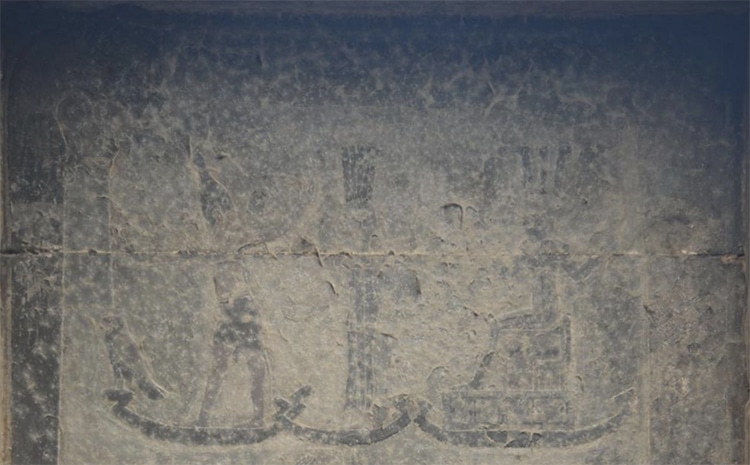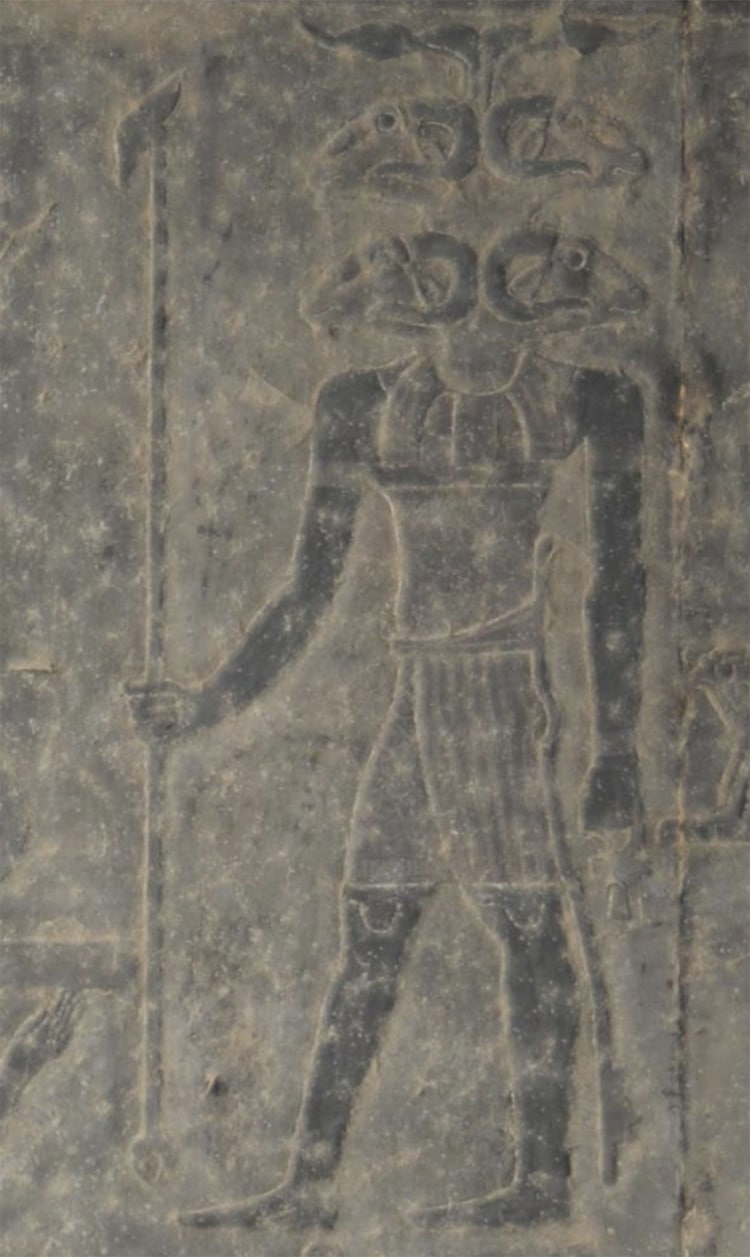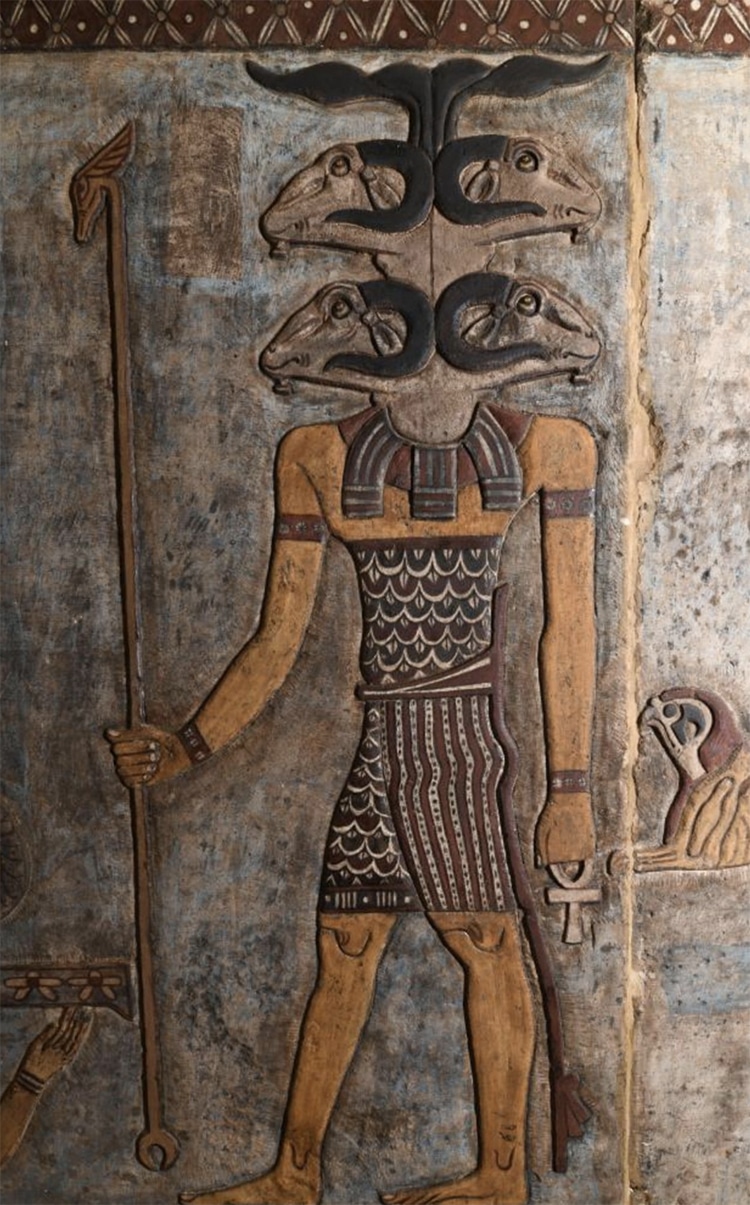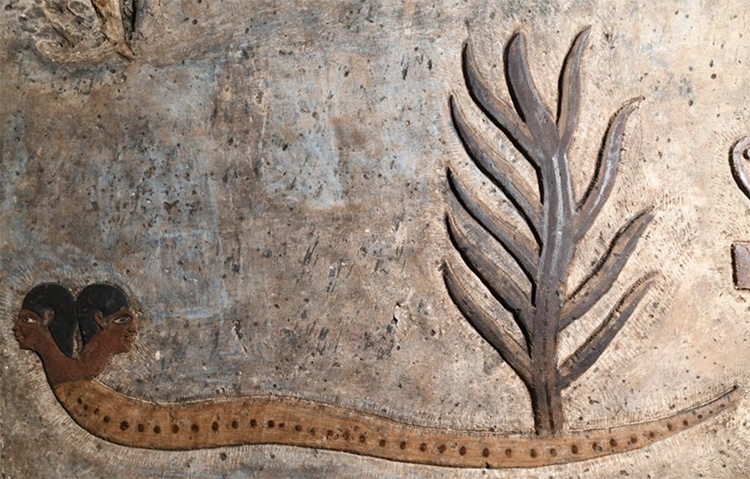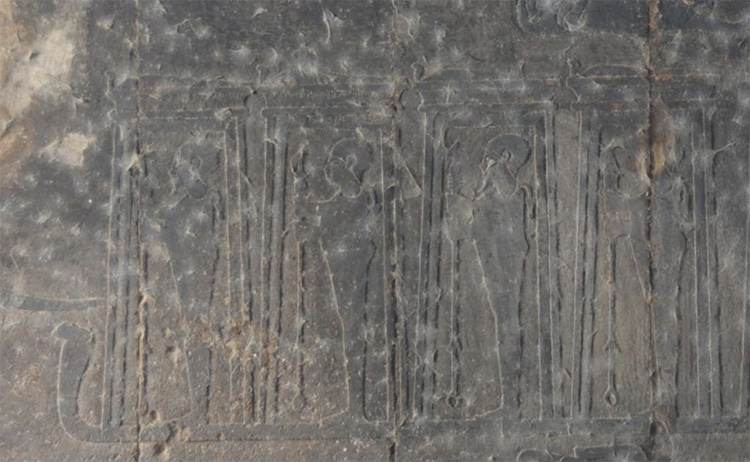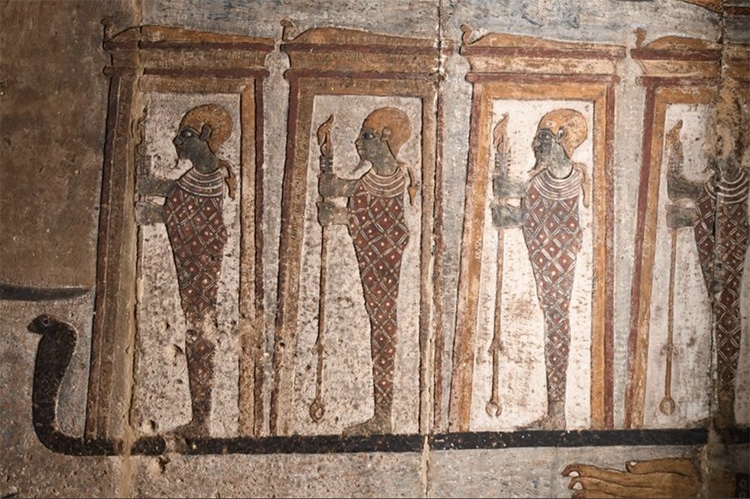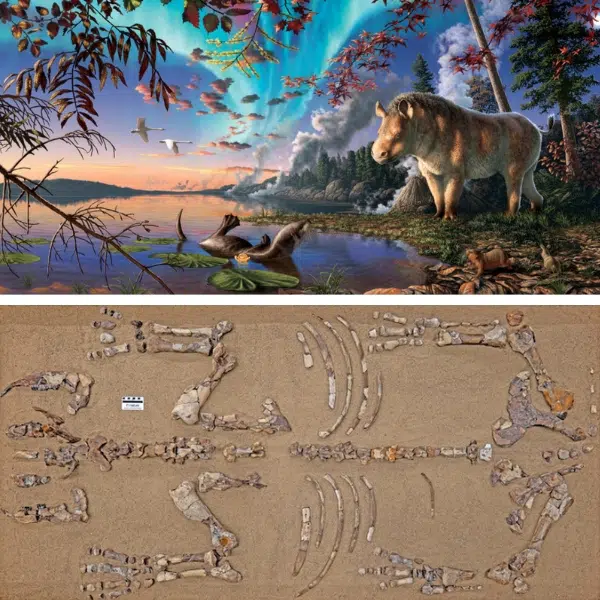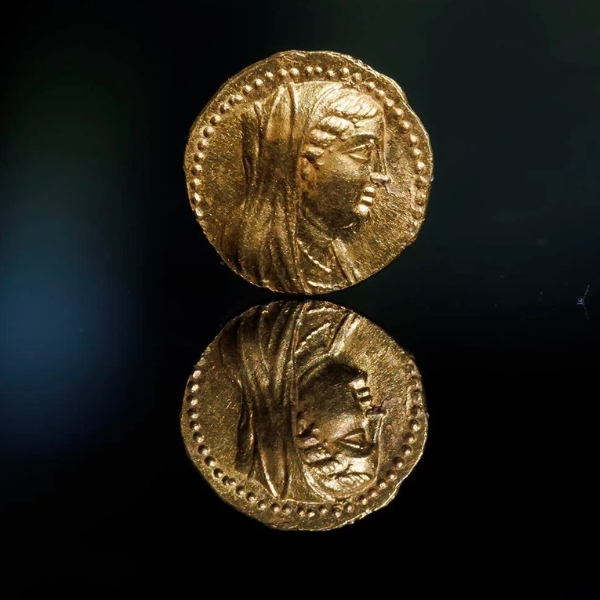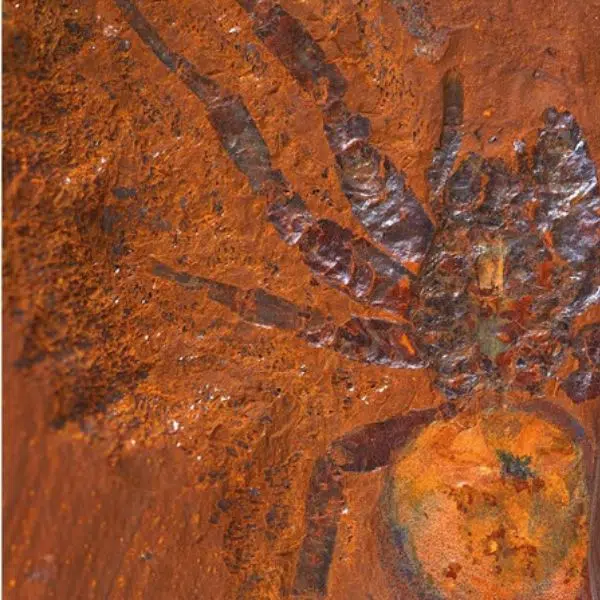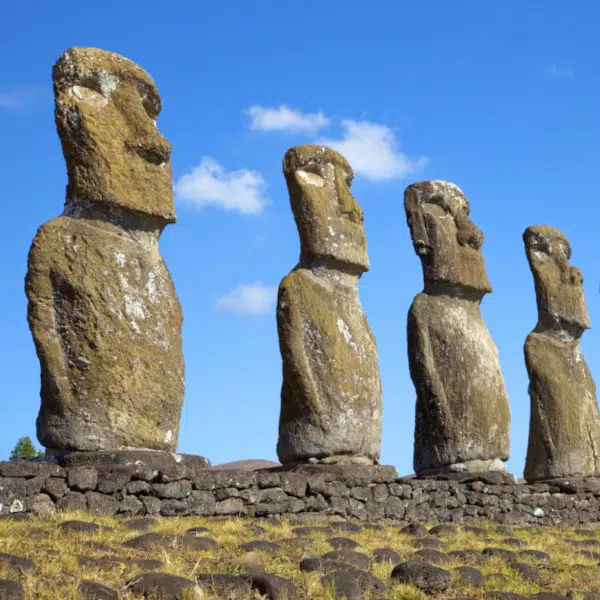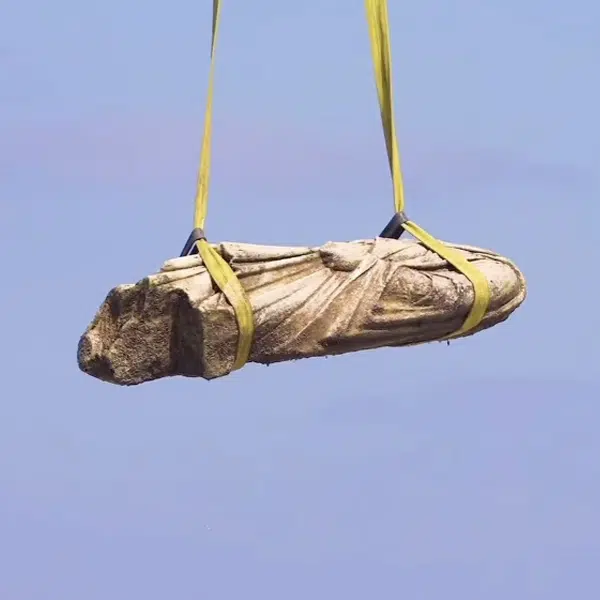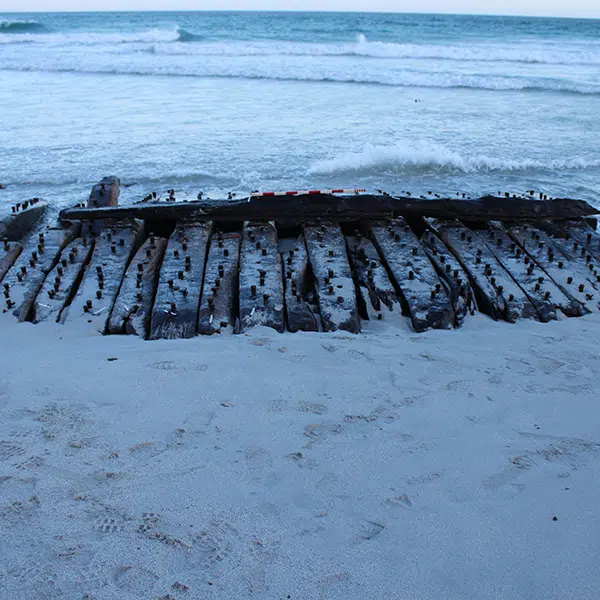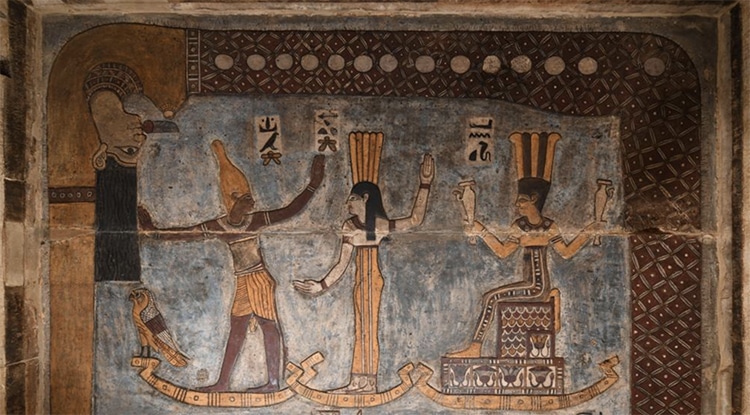
Deities on boats, Orion, Sothis/Sirius, and Anukis, create a New Years' scene, while above them the sky goddess Nut swallows the evening sun. (Photo: Ahmed Amin/Ministry of Tourism and Antiquities (MoTA)))
Archeology is often envisioned as a quest, whether it be digging for treasure or scouring caves. However, a significant amount of conservation goes into discovering and preserving the past. For a team of archeologists in Egypt, the last five years have been a cleaning mission. The group have been scrubbing dirt, soot, and bird droppings off the Temple of Esna's ceiling to reveal incredible ink inscriptions which were previously murky. Among these are a stunning New Year's scene of Egyptian gods—Orion, Sirius, and Anukis—onboard boats under the sky god.
The Temple of Esna is south of Luxor in Egypt. The part which remains standing is the vestibule or pronaos, which was built during the Roman period under Emperor Claudius (41–54 CE). Made of sandstone, it is 37 meters (88.6 feet) long, 20 meters wide (65.6 feet), and 15 meters (49.2 feet) high. It is unknown exactly what deity the temple was dedicated to but further cleaning of the walls may suggest an answer. Answers may be slow however, as it took the 30-person team five years to uncover the ceiling. According to a statement from the University of Tübingen, which partners with the Egyptian Ministry of Tourism and Antiquities on the project, the soot has receded across “hundreds of figures and astronomical representations, revealing them once more in their original colors.”
The ceiling has seven thematic sections. Among the panels is a New Year's scene, where Sothis, aka Sirius, is depicted by Orion. “Sirius is invisible in the night sky for 70 days a year until it rises again in the east,” Professor Christian Leitz of University of Tübingen explained. “That point was New Year's Day in ancient Egypt and also heralded the annual flooding of the Nile.” The goddess Anukis, also depicted, caused the Nile floodwaters to retreat about 100 days after this event. Also rendered on the ceiling were other figures, including a god with four rams' heads and a “representation of the south wind as a lion with four wings and a ram's head.”
However, there is still more work to be done in his historic site. “The completion of the ceiling restoration marks the project’s first and perhaps most important milestone,” Professor Leitz said. “In the next few years, we want to focus on removing soot from the interior walls of the Pronaos and the remaining columns.”
Archeologists are scrubbing away thousands of years of grime from the Temple of Esna, near Luxor, Egypt.
It took a team of 30 archaeologists five years to uncover the ceiling.
The ceiling includes an ancient Egyptian New Year's scene of Egyptian gods—Orion, Sirius, and Anukis—onboard boats under the sky god.
“Sirius is invisible in the night sky for 70 days a year until it rises again in the east,” Professor Christian Leitz of University of Tübingen explained.
“That point was New Year's Day in ancient Egypt and also heralded the annual flooding of the Nile.”
h/t: [Live Science]
Related Articles:
Egyptian Archeologists Request the Return of the Rosetta Stone and Other Artifacts
Researchers Rediscover Lost Egyptian Tomb With 4,400-Year-Old Mummy Inside
1,600-Year-Old Ancient Egyptian Socks Look Like Modern Fashion Statements
